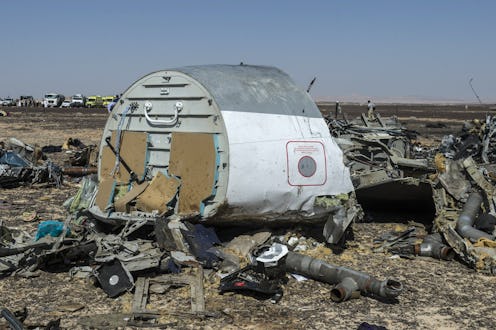Many of the details about Kogalymavia Flight 9268 are still unknown after the plane crashed in the Sinai Peninsula Saturday, leaving all 224 passengers, most of whom were Russian nationals, and crew members dead. The plane was traveling from Sharm el-Sheikh, Egypt to St. Petersburg, Russia, and Russian President Vladimir Putin has launched an investigation into the crash. Putin also declared Nov. 1 a national day of mourning in Russia. So how common was the Russian plane's route? Sharm el-Sheikh is a popular tourist vacation destination, but not just for Russians.
Sharm el-Sheikh is a resort city along the Red Sea, making it a popular spot for vacationers. And while tourists visit Egypt from all over the globe, Russian tourism to Sharm el-Sheikh appears fairly common. A Google Flights search from Sharm el-Sheikh to St. Petersburg, Russia, on Sunday evening provided dozens of flight options on various airlines. But in the aftermath of Saturday's events, some of the world's travel through the Sinai Peninsula will be restricted. Germany's Lufthansa, Air France, and Dubai-based Emirates all announced this weekend that they won't be flying over Sinai until the cause of the Kogalymavia flight's crash is revealed.
In addition to specific airline bans, a spokesperson for Germany's transport ministry said Sunday that all of the country's airlines should avoid flying over the Sinai Peninsula. The Associated Press reports that the ministry issued a "broad warning ... for using flight routes in the southeastern Sinai." Still, not all European airlines are concerned about traveling over the Sinai Peninsula: British Airways, EasyJet, and Virgin Atlantic said Sunday that they will be traveling to the area as usual, according to the AP.
Why are airlines like Lufthansa and Air France being so cautious, then? Yes, flying to Sharm el-Sheikh is common, and officials have expressed doubt over the likelihood of human error or ISIS using surface-to-air missiles to hit a plane flying at such a high altitude (close to 31,000 feet). But while the most likely cause of the plane's crash appears to be a technical problem, there's still no way to know for sure until Russian and Egyptian authorities reveal more details. If there's even a slight chance that ISIS militants are responsible for taking down the plane in some sort of retaliation against Russian airstrikes in Syria, those airlines are staying on the safe side to prevent tragedies like Saturday's. There's nothing abnormal about Flight KGL-9268's route, but it could become less common in the crash's aftermath.
